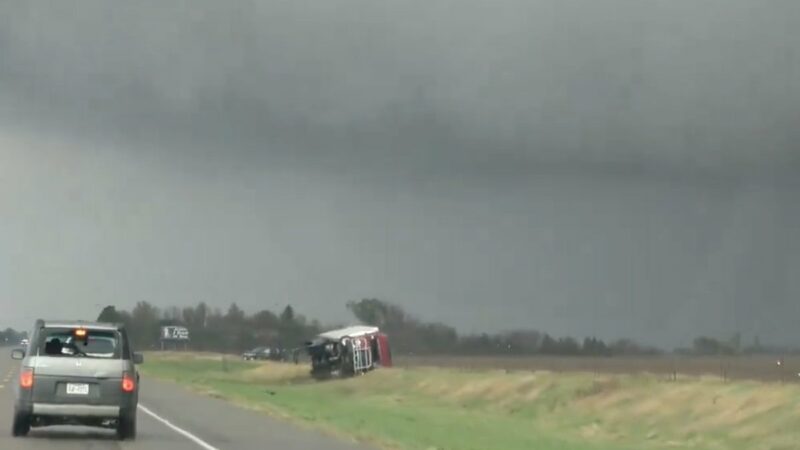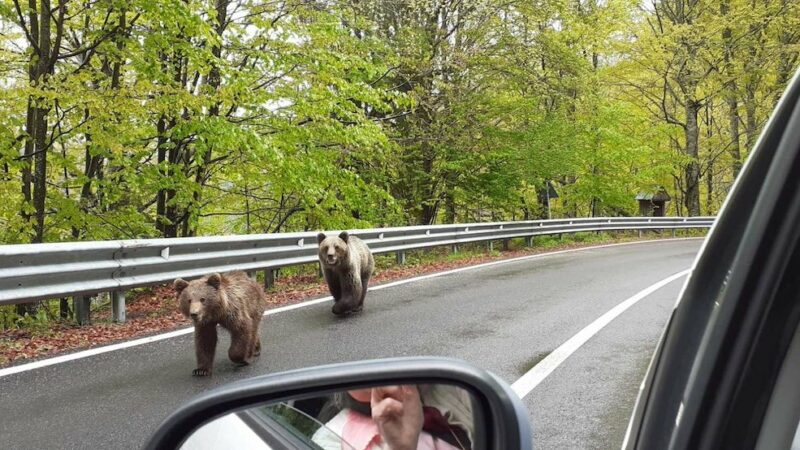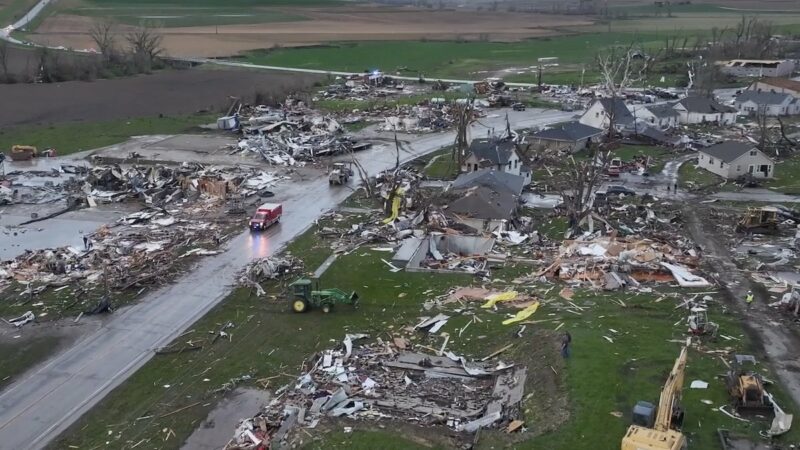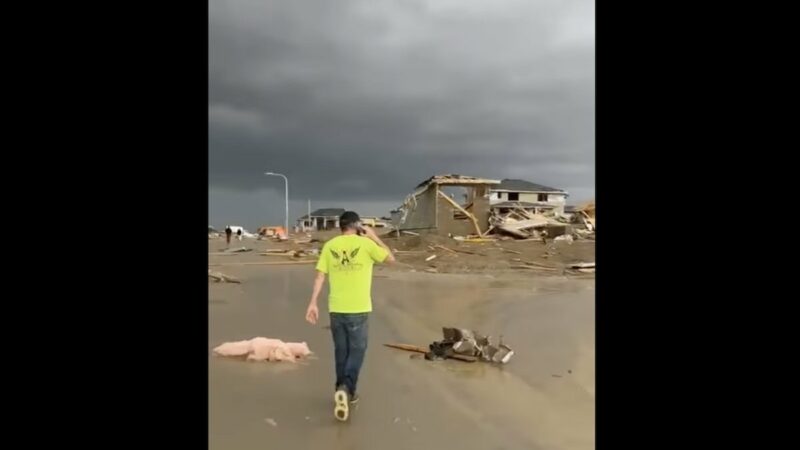Camping Essentials: What to Know and How to Pack for an Unforgettable Outdoor Adventure
More than 80 million Americans go camping each year, making it one of the most popular ways people in the United States choose to spend time outdoors. Camping can be a lot of fun—you’re often surrounded by nature and people you love, plus you get a break from day-to-day life.
Videos by Outdoors
Camping takes you out of your “normal” and puts you in a new place, where you can explore, relax, exercise, and socialize outdoors. The connections you form while camping—connections with others, with nature, and with your inner self—make it even more valuable as a form of outdoor recreation.
As any happy camper will tell you, though, camping is also a lot of work. It’s not the easiest hobby to get started with, because there’s a lot of gear involved. If you’re new to this game and need some help planning for your first (or your next) camping trip, you’ve come to the right place.
The key to a successful camping trip is preparation. While there’s always a little bit of “winging it” involved in camping, if you don’t have the camping essentials, you probably won’t have much fun.
Whether you have questions about how to plan a camping trip, need a rundown on some camping basics, are curious about camping safety and etiquette, or just need to know what to pack for a camping trip, you’ll find it all in this ultimate camping essentials guide.
How to Plan for a Camping Trip
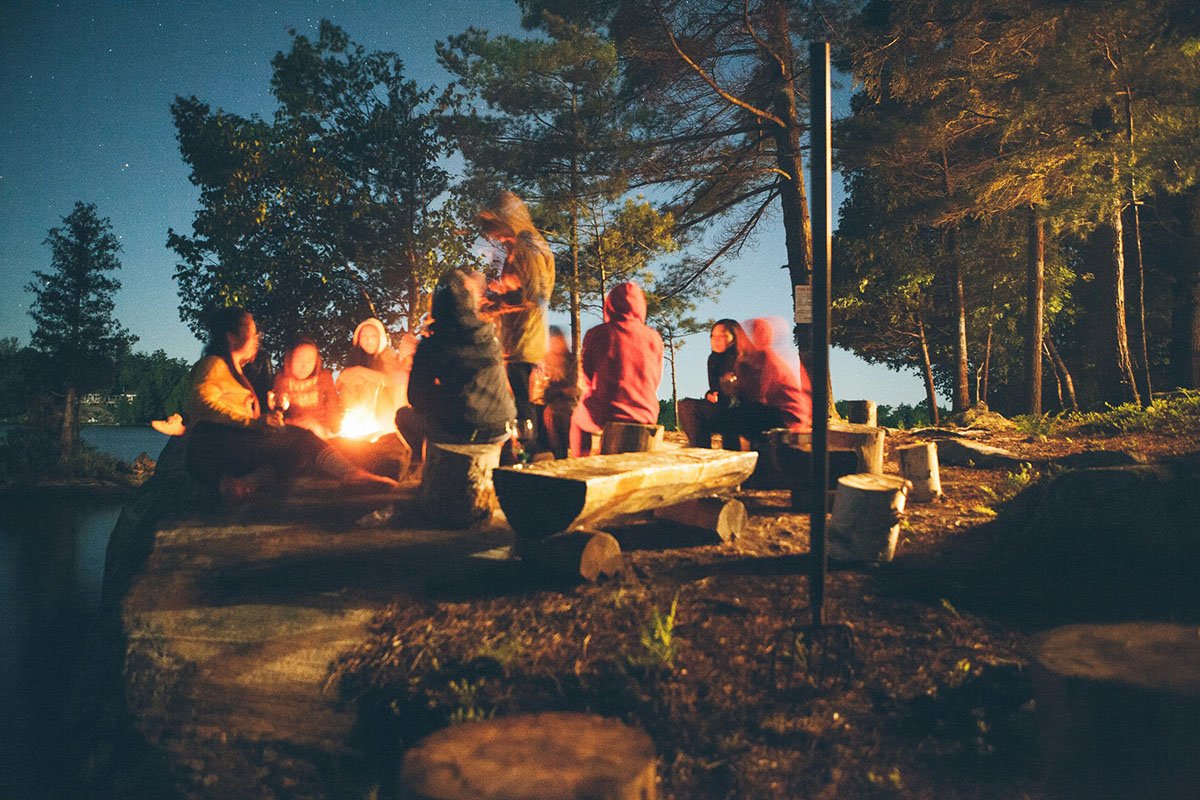
So you’re ready to plan a camping trip in the great outdoors? First, you need to decide where you want to go. You can camp in an established campsite for a fee in places like national parks, state parks, and regional or county-run parks.
In the U.S., you can also camp on BLM (Bureau of Land Management) land in established campsites or on public lands (this is called dispersed camping).
You can also camp on private land in privately owned campgrounds and RV parks, like KOA establishments, or by renting space from a landowner via platforms like Airbnb and Hipcamp.
The type of camping you choose will depend heavily on your preferences, your location, and how far in advance you’re planning your trip.
When planning a camping trip, be very aware of the weather during the time of year and at the location you’d like to visit. If you’re tent camping, you’re more or less at the mercy of the elements (although gear like tent heaters can make a big difference when it’s cold).
Unless you’re an experienced camper or have gear to help you enjoy being outdoors in very hot or very cold temperatures, avoid putting yourself in these situations by camping in milder weather.
When deciding on a duration for your camping trip, consider your gear and your group’s limits. For many, a two-night camping trip over a weekend is long enough to enjoy the activity. For others who may have more gear and/or more tolerance for living primitively, a week is more ideal.
Different Types of Camping
As you research for your camping trip, you may come across different terms for different types of camping. For instance, there’s tent camping, car camping, RV camping, backcountry camping, backpacking, overlanding, and glamping (plus many more).
Try not to get hung up on the terms; we explain the basics below.
The camping trips you remember from childhood were likely traditional tent camping—where you pitch a tent and sleep in it. Car camping can also be a form of tent camping because one meaning of car camping is any type of camping where you drive up to your campsite and can store gear in your car.
This is in contrast to backpacking, where you carry all your gear on your back and hike to the place where you’ll be setting up camp. Some people define car camping more literally as sleeping in your car.
RV camping involves driving an RV or a van or pulling a camper trailer to a designated place and sleeping in it.
RV campers may choose to camp in established sites with hook-ups for electricity, sewage, and/or water, or they may choose to “boondock” or “dry camp”, which is basically just RV camping without those amenities.
Tent and RV campers typically set up in the front country, where campsites are established and there are basic amenities like roads, bathrooms, and potable water.
Backcountry camping is any form of camping that takes place in more remote and less-established parts of parks or wilderness. Backpacking and thru-hiking are the best ways to backcountry camp because you can often only get to these places on foot.
Overlanding can also take you to remote places . . . with the help of your 4×4 vehicle. Overlanders may pitch a tent when they’re ready to make camp, or they may use a truck tent for sleeping that connects to their vehicle.
Glamping was a $3.2 billion market in 2023, so maybe you’ve heard of it. “Glamping” means different things to different people, but it always involves amenities you don’t typically associate with other types of camping.
Amenities may include Wi-Fi, bathrooms with plumbing, and real beds. The difference between glamping and staying at a hotel is usually the setting that surrounds the establishment.
How to Reserve a Campsite
If you’ve selected front-country tent camping or front-country RV camping, before you can get out there on your outdoor adventure, you must reserve a campsite.
Keep in mind that reservations are not required for all established campgrounds; some are first come first served. However, you won’t know that until you look, and many do require a reservation and, therefore, planning on your part.
For federally owned and managed lands, including U.S. National Parks and U.S. National Monuments, you should visit www.recreation.gov to explore what’s available and ultimately book a campsite. Be aware that if you’d like to camp in popular places, you may need to book up to six months in advance.
To camp on state-owned land, search for the state’s parks and recreation website or do a web search for “California state park camping” (replace “California” with the relevant state for your search).
Each state does it differently, but this should get you to the right place. Many state campgrounds also provide a mix of first-come-first-served sites and reservation-only sites.
Tips for Selecting a Campground and Campsite
When selecting a campground, consider where you want to be while you camp. In the U.S., you can camp in alpine/mountain environments, you can beach camp, and you can camp in the desert—and there are many variations of these basic categories as well.
Your preferred scenery, ideal weather, and favorite activities to do while camping will all help narrow down the choices when it comes to choosing a campground.
Once you’ve selected a campground, it’s time to pick the best campsite. First, consider your equipment.
Some sites are reserved for tents only, while others are designated for RVs. Often, sites can accommodate tents, trailers, or RVs up to a certain length, but not always, so be sure to check the site requirements.
Consider your group size. Double sites are often available within campgrounds to accommodate large groups who would like to camp together. Individual and group sites often have limits on the number of people and vehicles allowed.
To select a prime campsite, look at a map of the campground online. Often, you can pinpoint sites that have more space, are closer to (or farther from) amenities like bathrooms and water spigots, or that have a particular view you’d like to have.
You can often use the map to pick a site that backs up to a creek, that’s next to a trailhead, or that is farther from the road, depending on your preferences.
Camping Basics: Explained
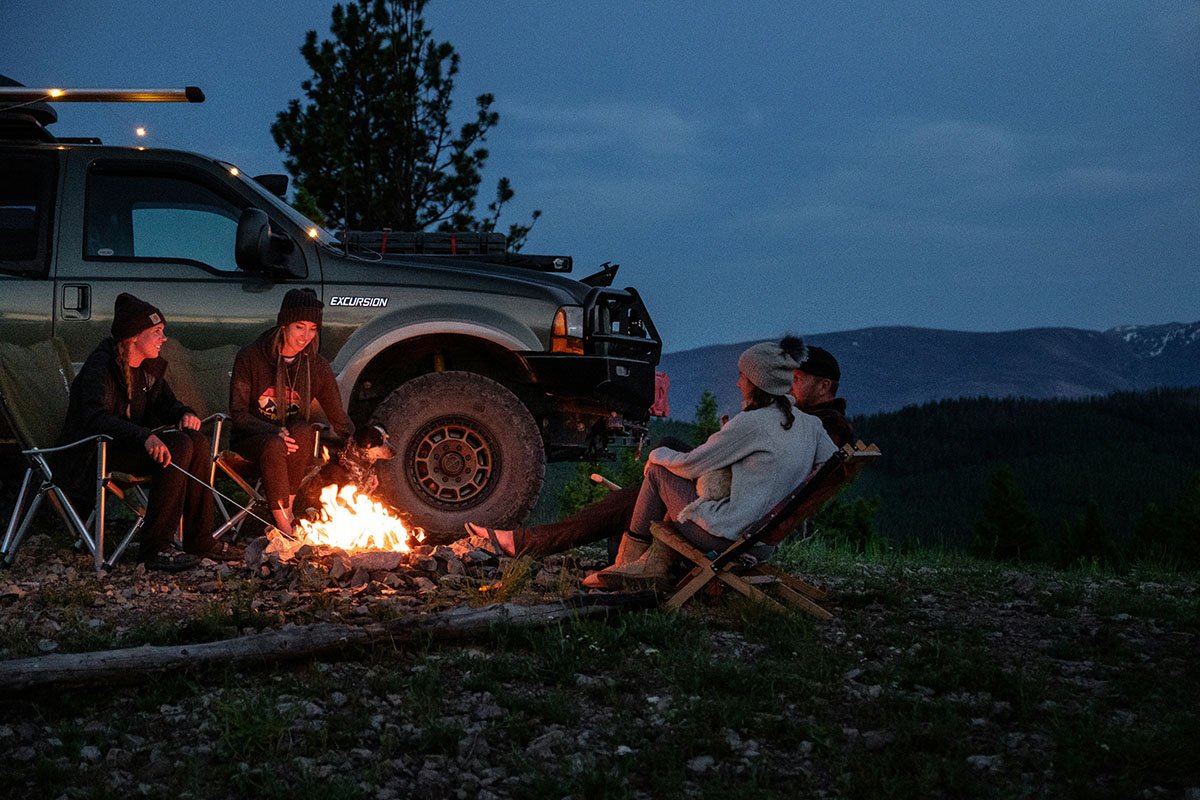
If you’ve never been camping before, the idea of temporarily living outside may seem a bit foreign—and maybe even overwhelming.
Before we get to our camping essentials checklist, which will help you get all your camping gear packed and ready, let’s prepare for your next camping trip by going over some camping basics.
Sleeping While Camping
Ah, sleeping under the stars. It sounds so dreamy, right? It’s not always, though. Sometimes, it’s just sleeping outside in the freezing cold. The thing is, we all do this to ourselves because camping is fun.
So how do you sleep while camping? What are your options for staying comfortable?
Most people don’t sleep out in the open when they camp; they’re in some sort of structure. This structure could be a camper trailer, a van, or an RV, or it could be a tent.
When it comes to selecting a camping tent, you must consider things like how much room you need, how easy you want the setup to be, and what bells and whistles you want or need.
Within your sleeping structure, you’re going to add some more sleeping items to your camping checklist, like a sleeping bag, an air mattress, a sleeping pad, and/or a camping cot.
Decide whether you’re comfortable sleeping on the ground in a sleeping bag or if you need to get up off the ground by using a camping mattress or cot.
What to Wear Camping
If you’re out in cold weather without the proper warmth or stuck in the rain with no rain jacket, you’re going to have a rough time no matter what you’re doing.
Therefore, to have a good time camping, you must bring the right camping clothes. What you wear while camping will depend on where you are, what season it is, and what the weather is like during your trip.
Generally, in warm weather, camping clothes should be lightweight, moisture-wicking, and offer sun protection. Check out our guides on hiking shirts and hiking shorts for ideas.
In cold weather, you should layer clothes to stay warm and dry. Check out our ideas for winter hiking pants, and learn how to layer below.
How to Layer
Layering is important when camping because the weather can vary significantly depending on the time of day. In general, layers of camping clothes should include:
- A moisture-wicking base layer
- An insulating layer
- A waterproof and windproof outer layer (like a rain jacket)
Always check the weather forecast before you pack for camping. This will help you know which layers you need and how many items from each category to bring so you can stay comfortable.
The footwear you need will depend on the activities you plan to enjoy while camping. If you’ll be hiking, bring hiking boots or other hiking shoes. If there’s a lake, river, or stream nearby, bring hiking sandals or water shoes.
For around the campsite, it’s best to have at least one sturdy, closed-toe shoe option and an easy-to-slip-on pair of shoes, like sandals or boots you can step into. Don’t forget moisture-wicking socks for daytime and thick socks for chilly nights.
Cooking While Camping
Camping food can be as simple or as elaborate as you want it to be, but most people keep it simple. Camp kitchen essentials include a portable camping stove or BBQ and fuel for it, some cooking implements and cooking utensils, and some serve ware and eating utensils, to cover just the basics.
Most campsites will have a picnic table, but if there’s no picnic table at your campsite, you’ll also need some sort of camping table for preparing and/or eating food.
Transporting food on camping trips is a bit of an art. You need a way to store food and keep it cool for the duration of your time camping.
This typically involves some specialized cooler and ice or ice packs. The best camping coolers are bear-resistant, which means they’ll also keep out other wildlife, not just bears.
If you’re camping in bear country, it’s extremely important to keep all of your food in bear canisters or locked in your vehicle away from your tent or sleeping space.
Treat your trash the same way. If you’re using plastic bags for trash, hang them up from a tree branch overnight or put them in a wildlife-proof container.
Many campgrounds are close enough to towns with grocery stores and restaurants, so you can leave your campsite to go pick up more ice and food, or even just have someone else cook you dinner if you need a break.
If you really don’t want to cook while camping, you can always survive on canned foods, trail mix, and energy bars for a few days.
Though cooking every night can be tiring, it’s fun to break out the Dutch oven and see what you can create over an open flame. Try out a few of your favorite recipes from home, and taste the difference between cooking over an open flame.
How to Wash While Camping
There are a few different camps of people when it comes to hygiene on camping trips;
- Camp one says you’re camping, you’re dirty, you’re fine
- Camp two does the minimum by filling plastic bins or buckets with soap and water, then cleaning themselves using a washcloth
- Camp three buys camping showers (or camps in an RV).
Depending on how clean you want to be while camping, your camping checklist will look a bit different. At the very least, add biodegradable soap and a towel to your camping gear to wash up when you need to. If you’re going all in with the camping shower, add some more camping toiletries to your packing list.
How much you wash may also depend on how available water is to you at your campsite. If you have easy access to water via a spigot or sink, you may feel more inclined to wash up than if you only have what you’ve hauled in.
Note that some campgrounds do have coin-operated showers available.
Washing dishes is similar to washing bodies; you need biodegradable soap, a dishcloth or sponge, and a towel for drying. You can wash dishes in a bin or bucket or add a collapsible sink to your camping gear (a collapsible sink is totally worth it).
A camp kitchen is one of the campsite essentials for people who like to cook. It’ll include surfaces and methods for prepping and cooking food and cleaning up your dishes when you’re done.
Going to the Bathroom While Camping
When nature calls and you’re camping in the remote wilderness, you head into nature with a wag bag or a small trowel—unless, of course, you have a camping toilet on your packing list. Some areas have rules that require you to pack out your waste using a wag bag or similar solution.
If your area does not have a pack-out rule, then the best practice is to dig a cat hole at least 200 feet away from a trail, campsite, or source of water, cover your waste, and pack out your used toilet paper.
If you’re front-country camping, though, there are likely facilities available to you, ranging from flushing toilets to outhouse-style toilets in a dedicated building. If you prefer to BYOT (bring your own toilet), there are plenty of options. Choose biodegradable toilet paper to complement your portable throne.
How to Prep for Making a Campfire
Most campsites have fire pits available for campers’ use. It’s best practice to either collect firewood from the area (be sure to add an ax to your camping gear for chopping wood) or buy a bundle of locally sourced firewood at the campground or nearby.
Your camping packing list should include a lighter or matches, some fire starters, and some firewood.
If you’re going dispersed camping and there is no fire pit available, you’ll need to bring or make your own. It’s a good idea to add a portable fire pit to your camping must-haves if you plan to camp anywhere other than an established campground.
Alternatively, you can always find a clear, level space, encircle it with rocks, and build your fire there.
Always check for fire restrictions in an area before lighting a campfire and properly extinguish your fire when you’re done.
The Ultimate Camping Packing List
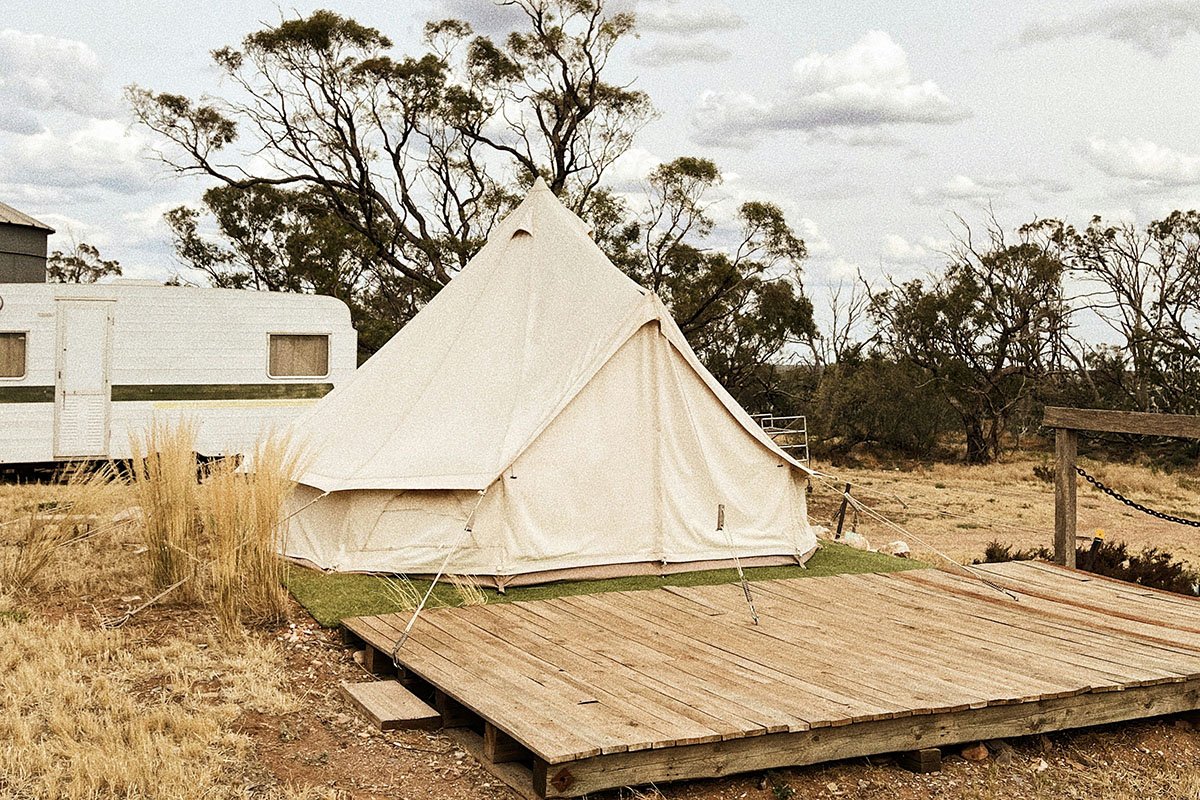
Ready for a list of camping must haves? When it’s time for your next camping trip, pack the following items to ensure you have all the camping gear you need. Please note that your camping packing list will vary slightly depending on the type of camping you’re doing, as well as the season and the location.
Shelter and Sleeping
- Camping tent with tent stakes (consider bringing extra stakes)
- Tent footprint and rain fly
- Sleeping bags
- Sleeping pads, air mattresses, or camping cots
- Pillows
- Camping blanket(s)
- Shade structure
Cooking and Food
- Camp stove or portable grill
- Fuel, charcoal, or propane
- Lighter or matches
- Cookware (including pots, pans, and cooking utensils)
- Cooler and food storage bins
- Biodegradable soap and sponge
- Food and snacks
- Water containers, gallon water jugs, and/or water bottles
- Camping table (if no picnic table at your site) and/or portable camp kitchen
- Bottle opener
- Portable coffee maker
Clothing
- Base, insulation, and outer layers (see How to Layer above)
- Weather-appropriate footwear (see Camping Footwear above)
- Extra socks and underwear
- Hat and sunglasses
Lighting and Navigation
- Headlamp and/or flashlight (with extra batteries)
- Lantern
- Power bank and/or solar panels
- Map and compass
- GPS device (GPS watch, personal locator beacon, smartphone, etc.)
First Aid, Hygiene, and Personal Items
- First-aid kit, including bandages, gauze, antiseptic wipes, tweezers, scissors, safety pins, etc.
- Personal medications
- Pain relievers
- Biodegradable soap
- Toothbrush and toothpaste
- Biodegradable toilet paper and trowel
- Hand sanitizer
- Cell phone (note, you might not have cell service)
- Bug protection/insect repellant
- Other personal items like lotion, deodorant, feminine hygiene products, and others as needed
Tools and Miscellaneous
- Multi-tool or knife
- Duct tape
- Fire starters
- Repair kit
- Trash bags
- Camp chairs
- Backpack or daypack
- Ax
- Extra batteries
Camping Packing and Organization Tips
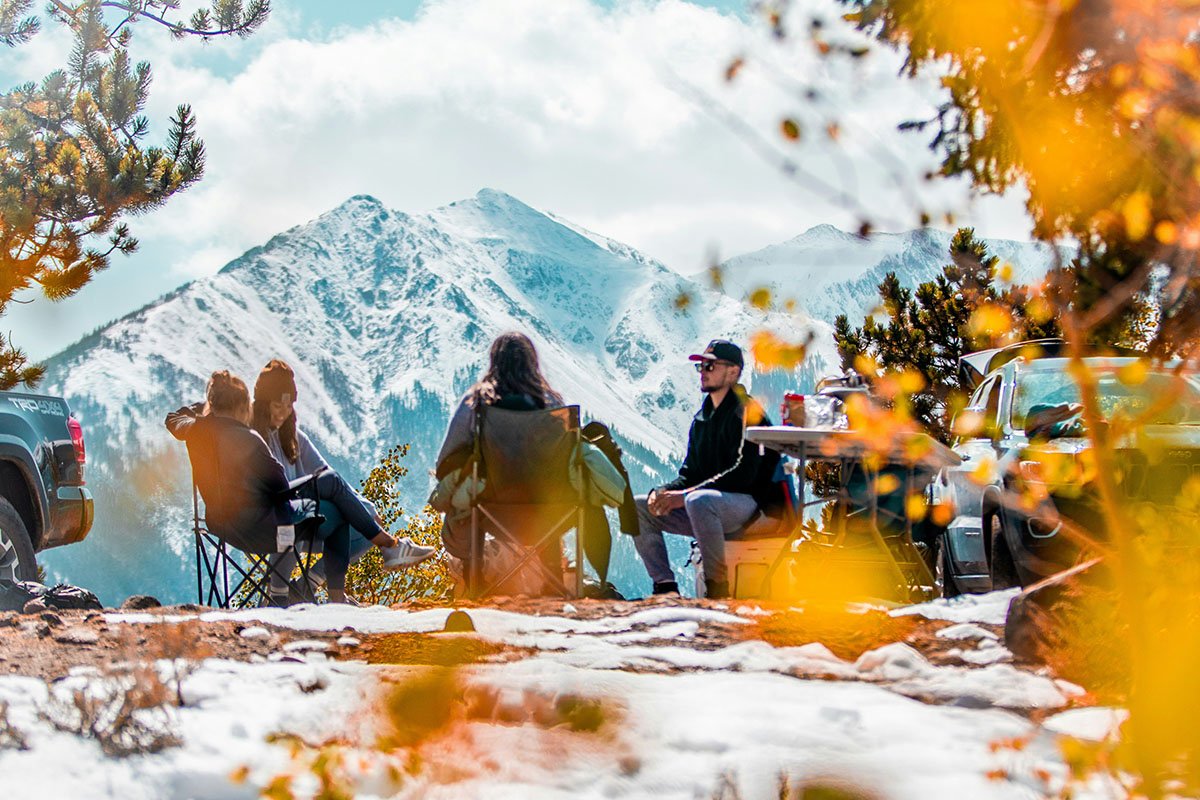
How, you may ask, can you pack everything from graham crackers, a bottle opener, and a sleeping bag to solar panels and a tent in a way that makes sense?
Many people have dedicated storage bins for their camping gear, so these items can often be transported in the same bins that they’re stored in. Clear plastic bins are helpful because you can see what’s inside.
Use coolers and any sort of reusable bags you have on hand to transport your camping food and drinks. Collapsible totes are a great choice for staying organized, and you can collapse them when you’re not using them. A duffel bag does the trick for transporting your camping clothes.
Bring some extra trash bags (or, even better, a large cloth bag) to store dirty clothes in after you wear them, and don’t forget to have a bear-proof container on hand to store your camping food so wildlife can’t get to it.
Small clear plastic bins are also helpful for storing things like cooking utensils, serveware, and first-aid items.
Camping Safety and Etiquette
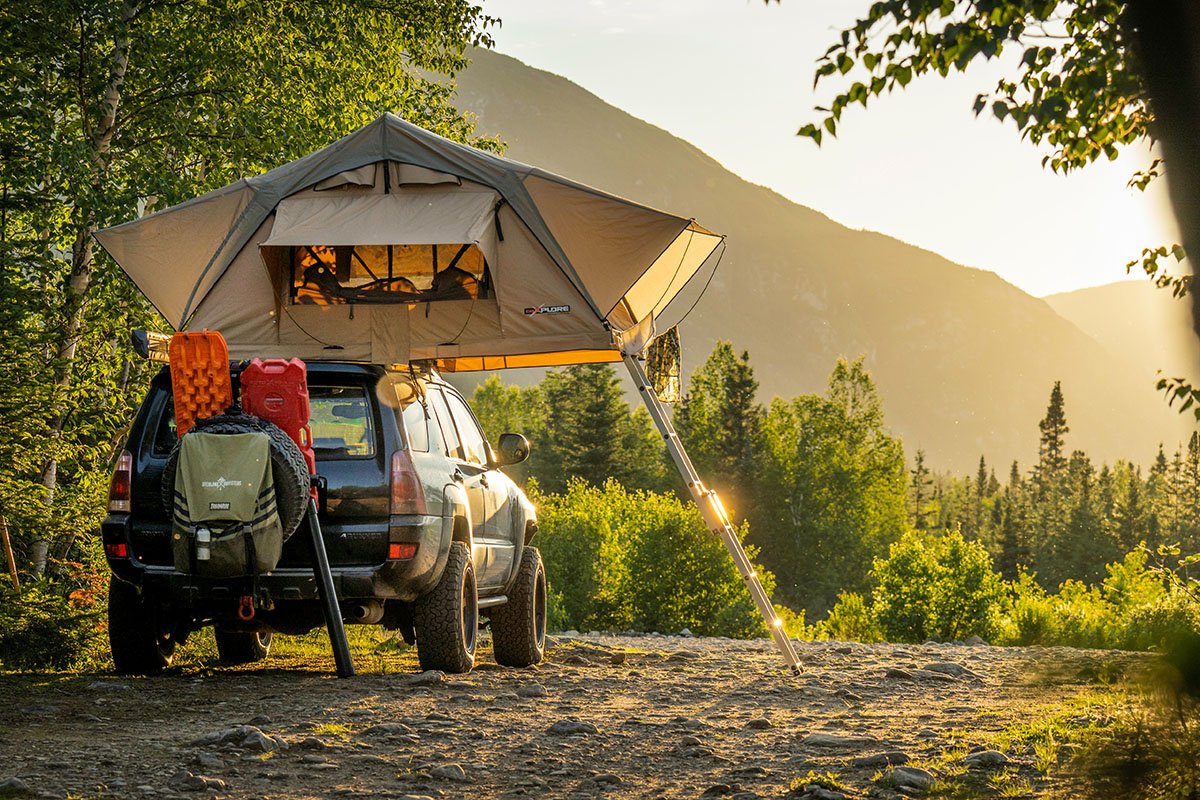
Potential hazards while camping are similar to potential hazards while hiking (see our guide to day hiking here) and include slips and falls, getting lost, wildlife encounters, and extreme weather.
Be diligent about where you walk, add offline navigation tools to your list of camping must-haves (since you might not have service at your campsite), carry bear spray, always watch for wildlife, and don’t forget to check the weather forecast before you start a camping trip.
Campsites have rules to not only keep people safe but also to make sure camp neighbors are being courteous to each other. Rules may include campsite-wide quiet hours, fire restrictions, and rules about where to park and not to park vehicles.
In general, when outdoors, you should also follow the seven Leave No Trace principles, which include:
- Plan ahead and prepare
- Travel and camp on durable surfaces
- Dispose of waste properly
- Leave what you find
- Minimize campfire impacts
- Respect wildlife
- Be considerate of other visitors
Feeling Ready to Go Camping?
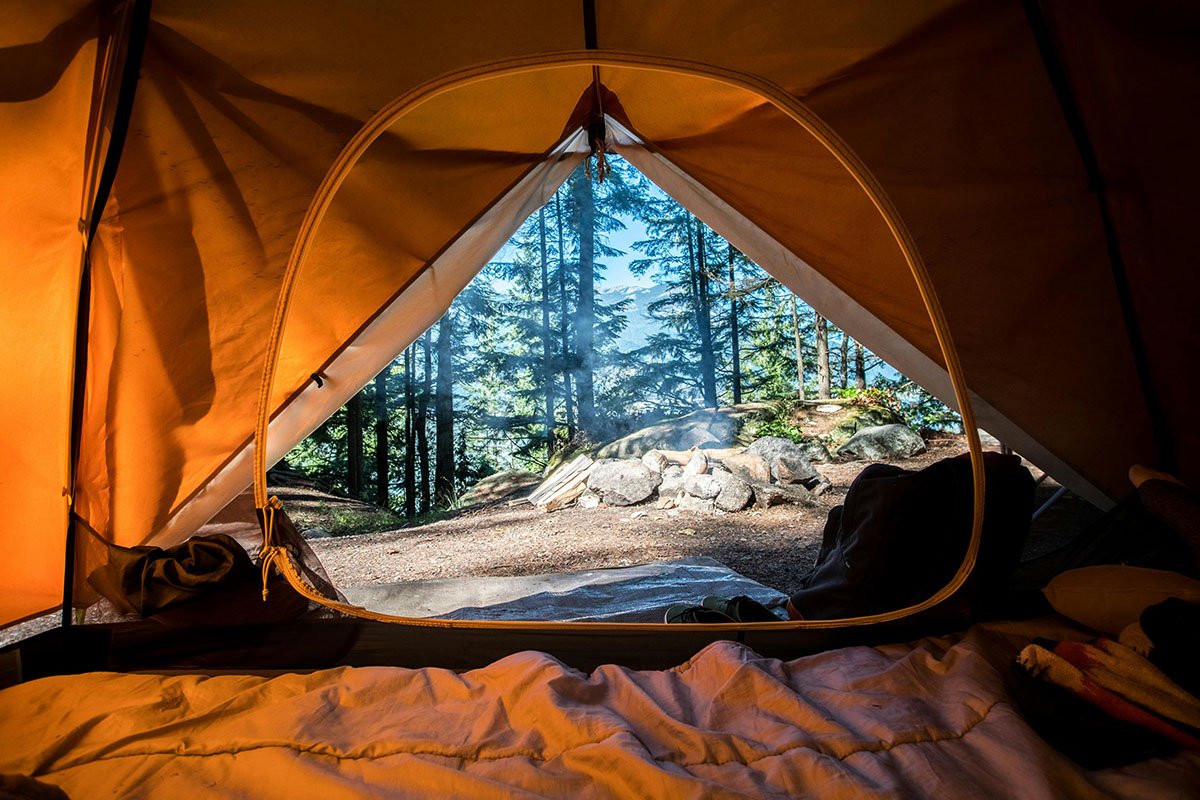
The ultimate camping checklist may not exist, simply because there are so many different types of camping and so many different types of campers, and everyone’s needs are going to vary sightly.
However, now that you’re armed with information about how to plan a camping trip, know all about the camping basics, and have a camping checklist of gear and other essentials, you’re ready to start prepping for your first (or next) trip.
No matter how much you prepare, stuff will come up. If you have the knowledge and the essential items, you can be creative when challenges arise while camping. And sometimes, the unexpected makes for a particularly memorable camping experience.
As you enjoy one of the most popular outdoor recreation activities around, please remember to recreate responsibly, leave no trace, and preserve nature for future generations of campers.
Source: https://outdoors.com/what-to-pack-for-an-outdoor-camping-adventure/
